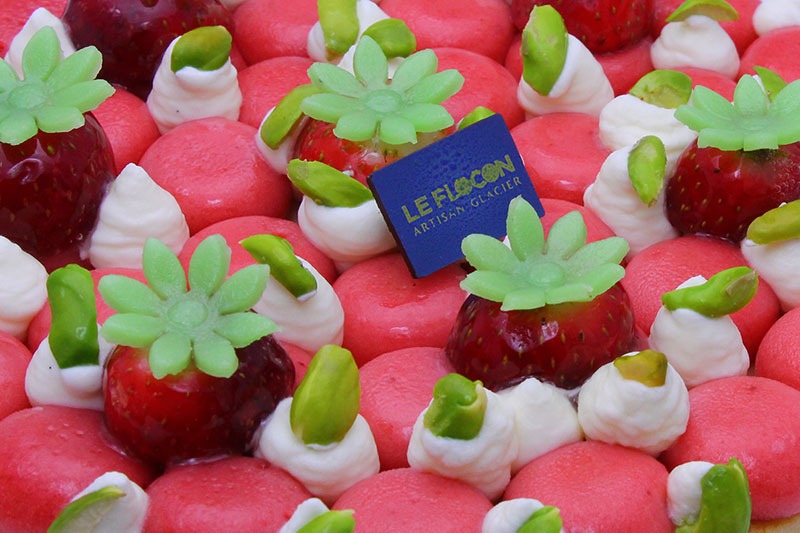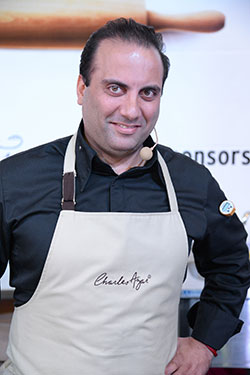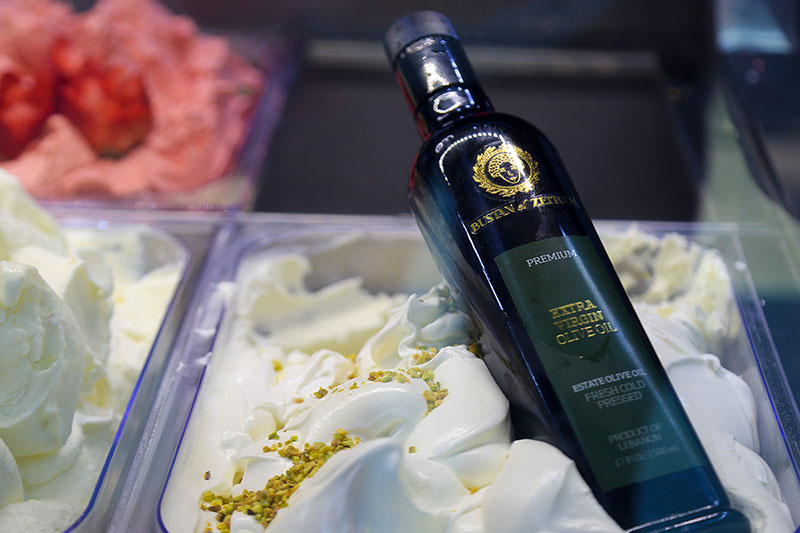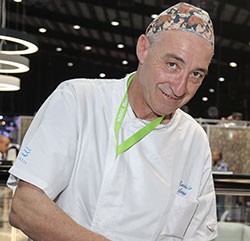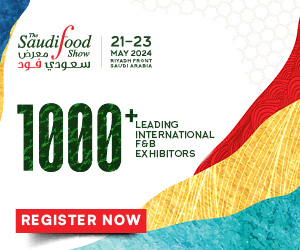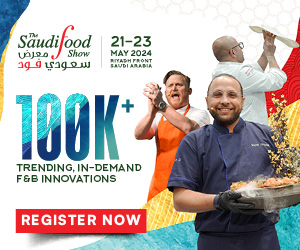Ice-cream is not what it used to be, as anyone who remembers when the only flavors around were chocolate, vanilla and strawberry, will testify. This sweet delight is today being redefined as a complex, standalone product, already being incorporated into sophisticated dishes and signature beverages
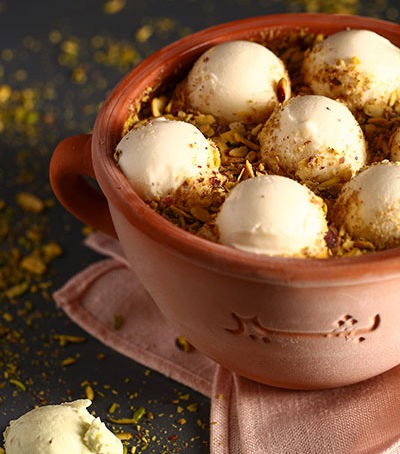
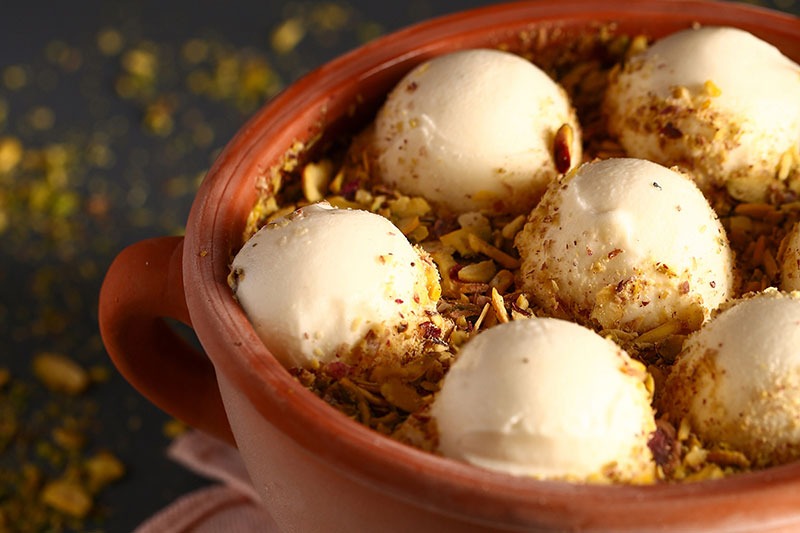
Sweet Emotion
Even though most people view ice cream as simply a sweet treat or indulgence, Chef Charles Azar takes the process of making it very seriously. The creations he has been channeling his efforts into producing are on an entirely different level, even bordering on art. Here, he discusses with HN the strategies behind his offerings, the flavors he incorporates from traditional Lebanese sweets and why he believes ice cream is gradually moving to the top of the menu.
What considerations should be taken into account when creating new offerings?
Every product, especially in the food industry, must have a clearly-defined strategy in order to allow it room to develop and grow. While these should be designed as part of a portfolio that supports the overall corporate strategy, each should also have explicitly defined characteristics that are specifically tailored to meet market needs.
What are some of the ingredients being incorporated into ice cream today?
People who work in the ice cream business specialize in spreading happiness and the way this is ultimately achieved is through a range of diverse approaches. Ice cream-making has become an art form that transgressed the original vanilla, strawberry and chocolate flavors. In an ever-expanding array of combinations, fruit purées and extracts, cocoa powder, nuts and cookie-dough pieces are some of the trending ingredients incorporated into the mixture by manufacturers.
What issues are you tackling to ensure you remain competitive?
Everybody wants to create a successful product, which isn’t always easy to do. A product’s success is ultimately achieved when the novel offering adds value to the available range, while delivering consistent value. Companies that achieve product success grow their loyal following and, in turn, outperform the competition.
What promising flavors do you believe will be trending this summer and why?
Ice cream production continues to develop in creative ways. One of the most recent innovations has been to transform Lebanese sweets into ice cream. Some of these include maamoul glacé, pistachio mafroukeh glacé and halaweh ice cream, which have been garnering an encouraging following based on feedback received.
Where do you envision ice cream heading in the coming years?
There are so many reasons why ice cream is the best dessert on the planet. No matter the weather, flavor or time of year, it is the perfect frozen treat for anyone of any age. There is so much you can do with this deliciously creamy dessert! It could be served as it is or added to other items on the menu, such as cake, cookies, brownies, perhaps even some dishes, thereby shifting its status from a side offering to a more central one.
Master Chef Charles Azar
The Pursuit of Happiness
Maurizio Avena is an Italian master pastry chef with more than 40 years of experience. He studied the art of pastry at the Istituto dell’ Arte Bianca di Turin under some of the world’s most reputed chefs and today teaches at the elite pastry academy of Castello di Barolo. Chef Avena has been working closely with international ice cream companies since 2006 and is also developing new and innovative products exclusively for the Granulati Italia company. HN had an opportunity to meet and sample his marvelous creations at Fresca LTD’s HORECA 2018 stand and also ask him about the lesser-known challenges that ice cream-making presents.
What does the production process involve?
Making a single product that looks nice, tastes good and is not detrimental to people’s health is undoubtedly a tricky proposition. The process becomes even more complex if you are making a product for diabetics or people who are lactose intolerant or have an allergy. However, I am committed to creating something that brings joy and satisfaction, while catering to consumers’ sensitivities and dietary needs.
What are the challenges on that front?
At Gelato d’Italia, we are working on producing a line of ice creams for lactose-intolerant consumers. Also, our products are gluten-free, meaning that they are safe for people with allergies to consume. On top of that, we have come up with a solution for two significant health considerations that pose major challenges for brands everywhere. We are currently working extremely hard on delivering gelato products that are safe for diabetics to eat. This is proving very difficult since, on the one hand, we’ve experimented with various chemical sugar compounds that circumvent existing problems for some diabetics, but cause damage elsewhere, while on the other hand, we’ve been looking at a natural sugar compound that resolves other concerns, but raises new ones.
What are some of the requirements and skills needed to master the process of ice cream-making?
The answer may come as something of a surprise, but mathematics is a very important discipline in ice cream-making, since the process is about mixing the exact quantities of sugar, fat, stabilizer and other ingredients. Very few people are aware that each product ends up in a store, where it requires between 18 and 24 months of rigorous testing. We do this to guarantee that every offering is safe for consumption. Whether that product sells well is an entirely different proposition that requires its own set of calculations.
What are the challenges of operating in highly diverse global markets?
Just because a product proves a success in a market such as Italy, there’s no guarantee that it will achieve the same results in China, North America or the Middle East. While there are plenty of commonalities, there are also diversities that can make or break a product. For example, consumers in various markets might all like chocolate, but not necessarily prefer the same flavor of chocolate. That is why, depending on the market and product, we employ two different approaches. The first is a bespoke one and the other is more along the lines of one size fits all.
What strategies, then, are used to accommodate changing tastes in diverse markets?
The answer to this question is somewhat complex. For example, if we want to make gelato for the Swedish market, we must first consider the weather! Remember that snow falls there nine months of the year. Temperature averages also play a significant role; in summer the range there, for example, is generally between 12-15 degrees celsius. Aside from the flavors, we need to be confident that the ingredients going into them ensure that the product maintains its consistency for as long as possible within the existing parameters. Greece, Lebanon and Morocco are markets that may seem similar in many ways to an outsider, but, in reality, are very different.
What methods are used to learn more about individual markets’ specifics and characteristics?
One of my principal responsibilities is to visit the market in question, sample the available offerings and discuss these with our partners there. When I return, I first brief the owner of the company, then discuss the most suitable solutions for the market in question with the technical director. Next, we present our findings to the country manager and try to align our approach and vision. This is then followed by a visit from a representative of the host country, who, in turn, verifies the accuracy of the findings so far and sets up meetings with potential clients who can eventually carry our brand in their stores.
What role do technological advancements play?
Production technologies change from one year to the next. In the raw material/machine production phases, there is always room for upgrades. That makes it necessary for us to meet with our clients and bring them up to speed on how a certain upgrade will yield a better solution for a specific product. In addition, and due to these instituted upgrades, using, or at times even finding a more appropriate ingredient becomes essential to move forward. This relentless and never-ending pursuit of the best possible product is what drives us to push past our own limits.
Master Chef Maurizio Avena





